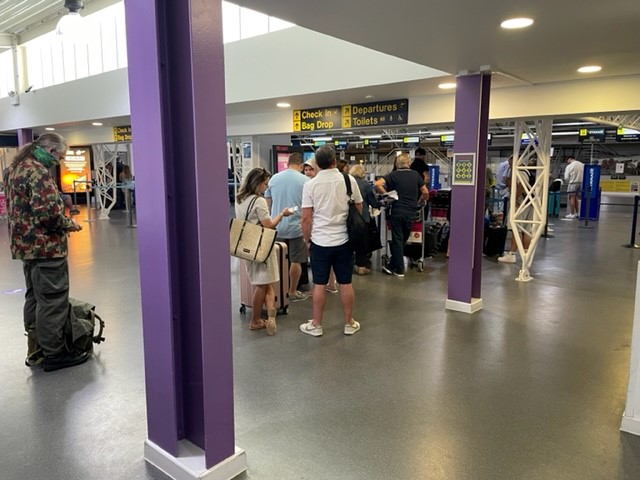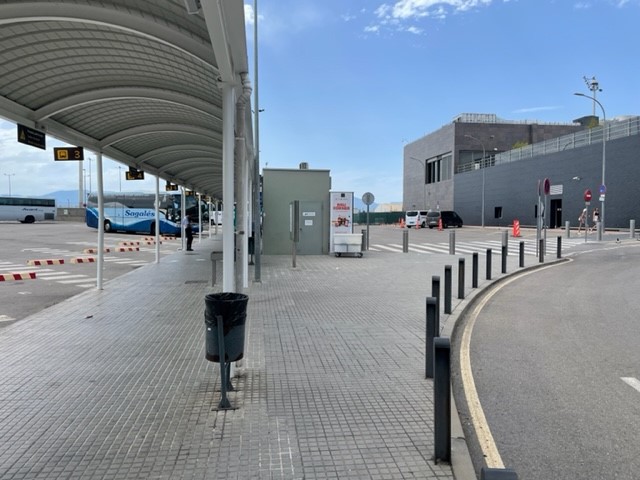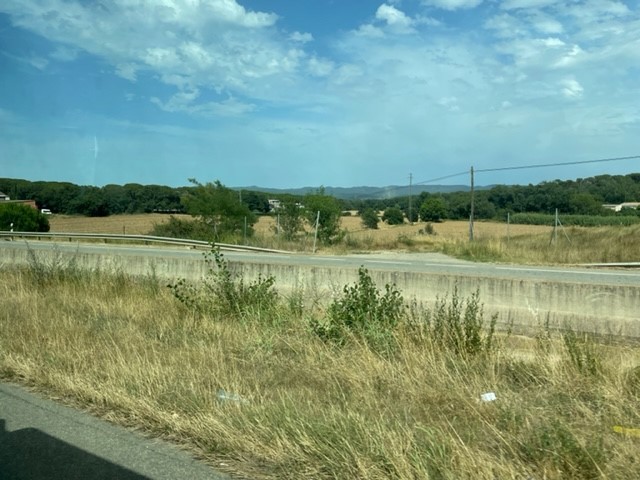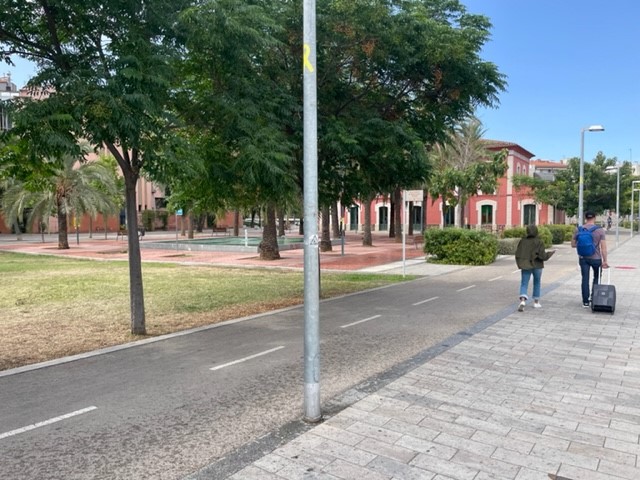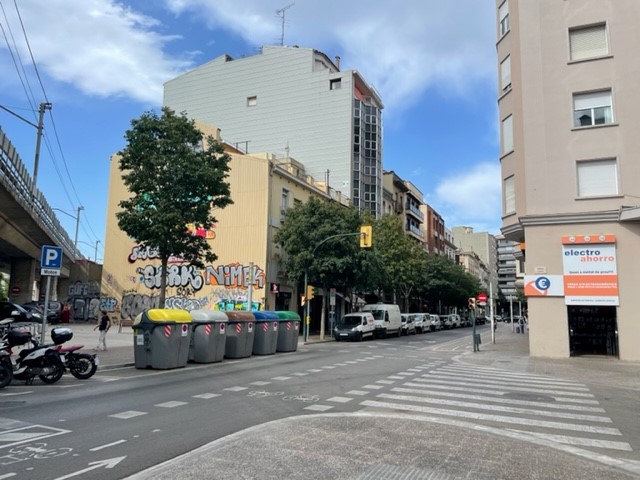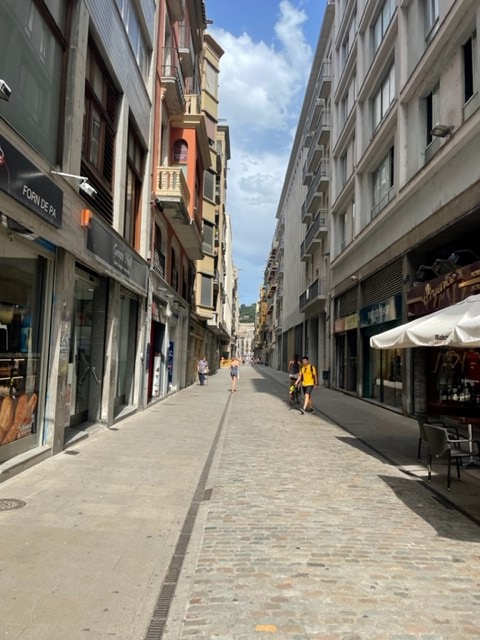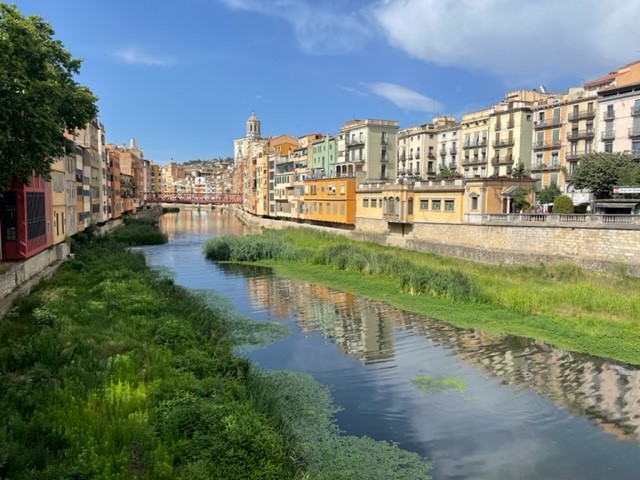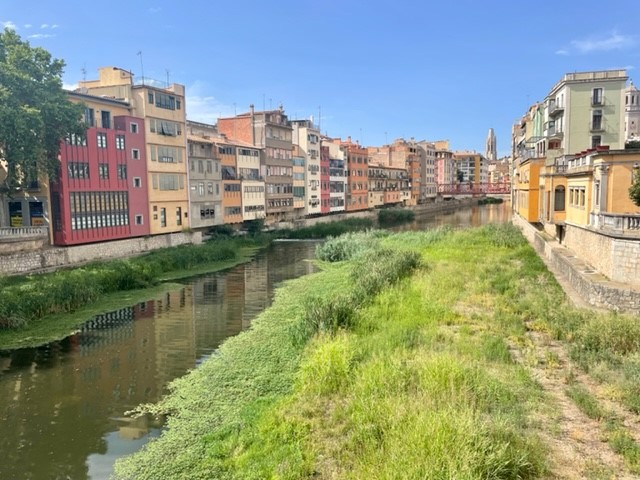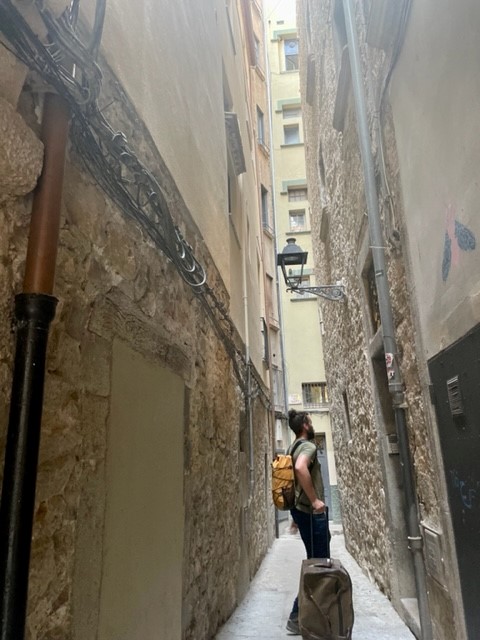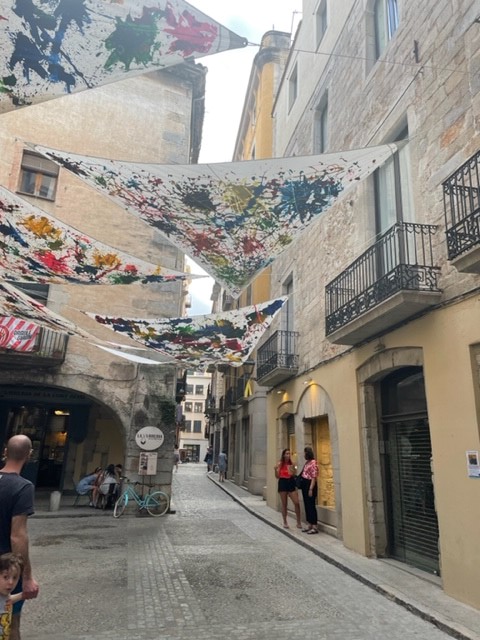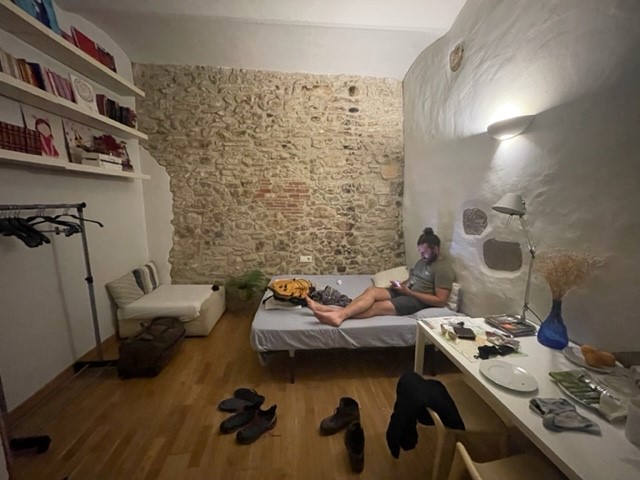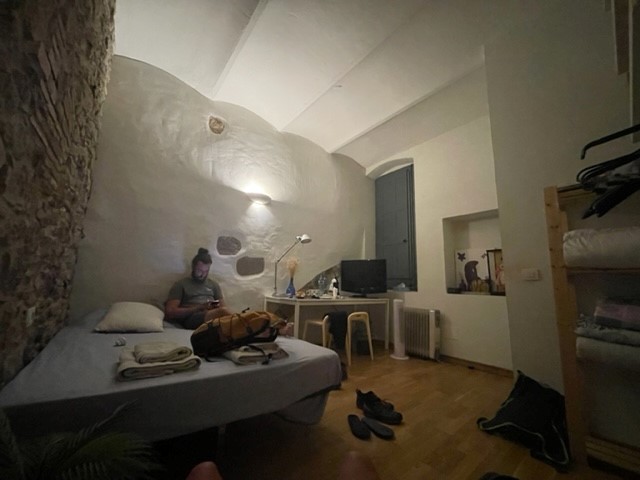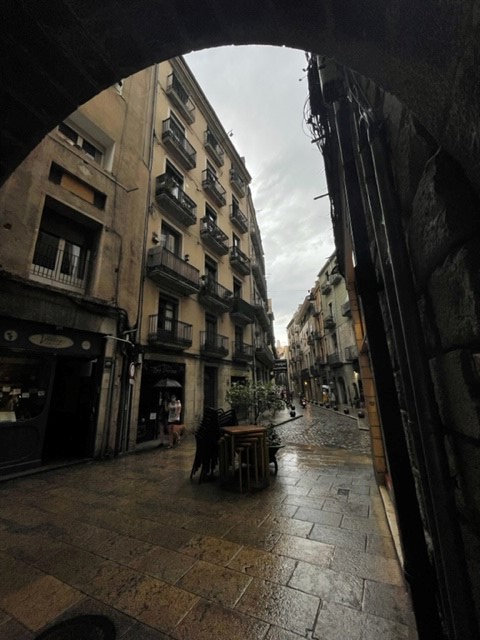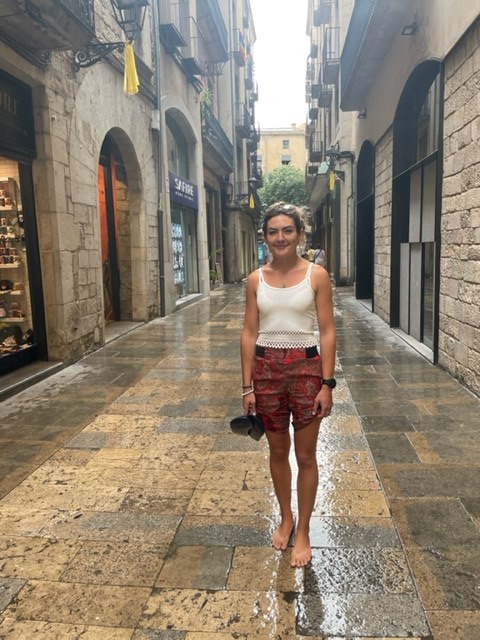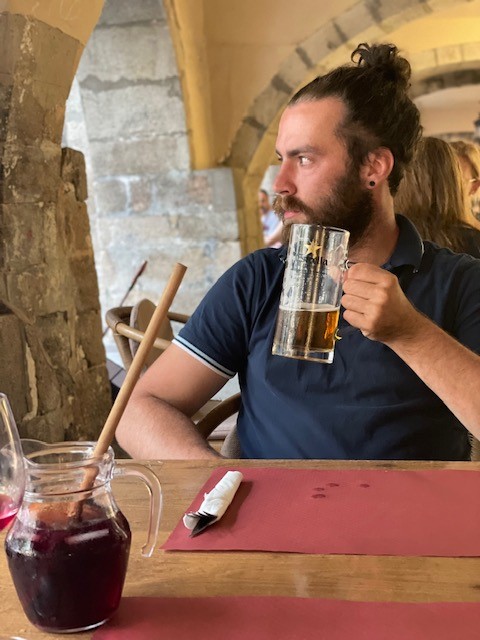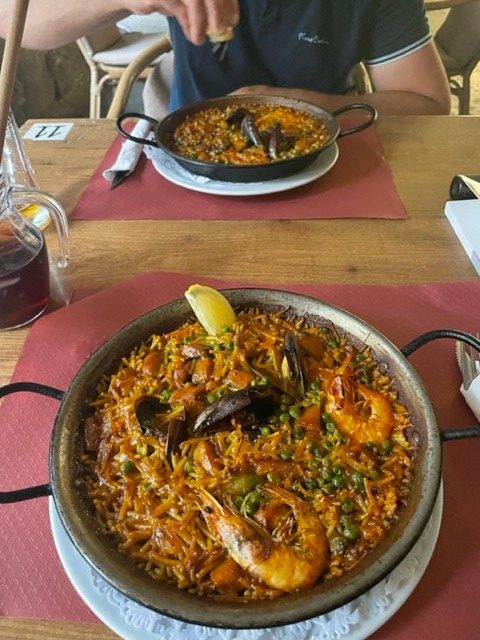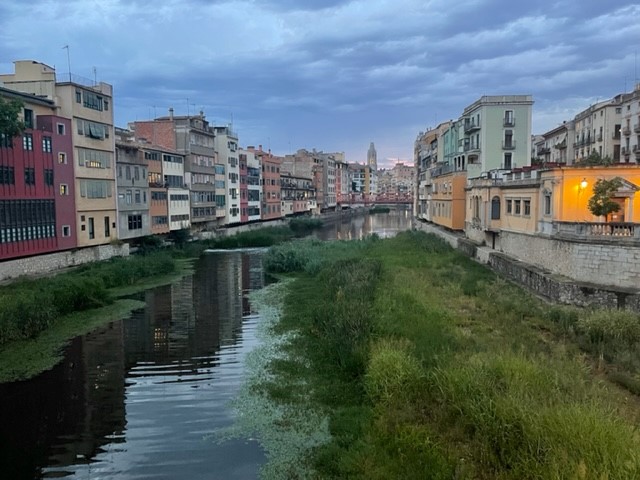Monday 3 July
Following the stress of preparing for our last minute holiday, it was blissful to wake up in our peaceful Croatian apartment with no urgent responsibilities. I did battle with the window blind and the coffee machine, two of my arch-nemeses (objects that I always struggle to operate, no matter the make/model), and ate cereal while Ryan worked on getting up.

Starigrad town
Our plan was to walk into central Starigrad on a reconnaissance mission – a term I used to help justify a relaxing day in this wild, exciting country – to gather information on the area and obtain a local map. We left the apartment at 9am and headed down the road towards the sea, drinking in everything about the place: the constant croaky hum of cicadas, the generously spaced out buildings, the variety of shrubs and trees, the clean streets and the hot sun. Most houses were painted white or cream, with red tiled rooves, verandas and shuttered windows. The gardens contained large, stone-chimneyed outdoor ovens, seating areas and abundant vegetable patches filled with all kinds of produce, and several residents had set up little stalls selling homemade jams, liqueurs, oils and home-grown fruit and veg. I was instantly sold on the place.
We walked past houses, campsites, cafes, supermarkets, restaurants and a petrol station, all lined up along the main E65 road through the long, narrow town, which is sandwiched between the Velebit mountains and a large inlet of the Adriatic Sea. On reaching the town centre we were drawn straight to the water, which was calm and impossibly clear. Little boats were moored in little quays and a small tourist market spread along the wide waterfront walkway, but – unlike other places we’ve visited – nobody tried to draw us in, despite our apparently obvious Englishness (throughout the week lots of people greeted us with “hello” rather than the Croatian “dobar dan”).
Remembering our mission, we peeled away from the inviting water and headed for the tourist information centre across the road. We picked up some leaflets and free maps, which we perused on a little wall outside. One of them described a 3-mile circular hike from Starigrad to the Mirila, a series of stone monuments in the Velebit foothills dedicated to the departed relatives of local people. I pitched the idea to Ryan, who must have inwardly rolled his eyes before agreeing.






Starigrad-Mirila hiking trail
We returned to the little market to buy a much-needed pair of sunglasses each, then headed up a peaceful, residential street to the start of the hike, examining the sun-drenched, productive, leafy gardens along the way. We followed a quiet road which climbed above the town, tried some not-quite-ripe fruit from a wild fig tree, and stopped at a viewpoint to gaze contentedly at the view. Orange rooves sprawled among lush trees, and we looked across the flat, blue water to the stretch of semi-arid mainland on the other side of the inlet. In, that moment, we knew that the hassle of travelling was well worthwhile.




We left the road and took a narrow gravel trail into the Velebit foothills and Paklenica National Park. It didn’t take long for me to regret – for once – wearing flip flops, as they became quite greasy under my hot feet and much of the route involved balancing across large, uneven boulders, but the karst limestone was too sharp to go barefoot. This, however, wasn’t my main concern: I was busy concentrating on not being bitten, having glimpsed a sandy brown snake (which I retrospectively identified as probably a balkan whip or aesculapian – both non-venomous) slither into a crevice a few metres away.
I struggled along, holding Ryan up for once, but I was far too happy to turn back. The way was marked by intermittent red paint on the rocks and required some careful route-finding – at one point we lost it in a boulderfield, so Ryan acted as scout while I examined a snakeskin and fended off a large hornet. We were keen not to stray as I’d read of unexploded land mines off the trails within Paklenica, but thankfully we regained the path and continued up the hill. I developed a snake-scaring tactic, which involved picking up handfuls of stones and tossing them onto the path a short way ahead to frighten off any lurking creatures prior to the arrival of my feet – this seemed to work, as apart from a few scratches I remained unscathed and unbitten.



After about a mile of this precarious fun we reached the mirila stones, which are set in a kind of basin between the hills of Mali Vitrenik and Veliki Vitrenik. This was our first taste of Paklenica’s beautiful wilderness: high, rounded hills of pale grey rock and dark green shrub dominated the landscape and the valley ahead of us brimmed with lush vegetation, filled with the ever-present buzz of cicadas. The bare, 350m vertical face of Anica Kuk instantly drew our attention, rising prominently above the valley and looking – from a climber’s point of view – both ominous and irresistible. We perceived (correctly, as we’d find out that coming Thursday) that Paklenica would become a very special place.
The stones themselves are small and so in-fitting that they could almost be missed among the textured, busy scenery. They were placed by the people of the mountain hamlets in the 17th to 20th centuries in memory of their loved ones, and the tradition was that the bodies must be carried there without stopping – a strenuous task – to greet the sun for the last time. Stone tablets were laid at the head and feet (the people must have been quite short), carved with various symbols, then the bodies were returned to local graveyards. It was believed that the souls of the deceased would remain at the site of the mirila, which the families visited more often than the actual graves.
There were several of these stones dotted around a small area, and I found the markings – mostly circles and crosses, some celtic-looking – mysterious and very interesting. It felt serene, poignant and strangely humbling, and I informed Ryan of my desire for a similar ritual in the event of my inevitable snake-induced demise.







After a thorough and respectful poke around we headed back down another rocky path towards Starigrad. I was interrupted during a “wild wee” (as my mum calls it) by the jingling of a large, multicoloured goatherd passing across the valley above us, led by a tanned, bare-chested man wielding a crook, the first person we’d seen since setting out on the mountain trail. The way down was otherwise uneventful and very pleasant, save for my continued struggle across rocks in sweaty flip flops, which I had to fix a few times after pulling the strap through the sole – this was very frustrating.
We were back on tarmac after about a mile, and as we walked through quiet streets we observed yet more thriving vegetable gardens thick with tomatoes, cucumbers, melons, grapevines and – strangely, I thought – cabbages. I was delighted to find a scarce swallowtail butterfly, retrospectively identified, basking on the street, with large, zebra-striped wings and two long tail points. We returned to the town centre and went straight to the sea for a dip.



First swim
The waterfront at Starigrad was unlike any I’ve seen. A wall stretched along the length of the perfect little town, with a 4-5 foot drop down to the clear, blue water, and the walkways were peppered with trees, flowers, benches and bins. Small, square concrete sections jutted into the sea at regular intervals, providing moorings for several boats, separated by slipways and little grey pebble beaches. Because the front was broken up in this way, it never felt too busy despite lots of people – mostly Croatians on holiday, it seemed – having set up inflatable mats (there was no sand) and towels.
We followed a wide walkway from the little tourist market to a small, empty beach between two mooring blocks and settled on the wall. Houses, a small restaurant and a pretty cream church were set back from the water on the other side of a quiet road, and I watched a young man on a moped cross himself as he rode past – the majority of Croatian people are Catholic.
I was in the sea within minutes and wore flip flops until it was deep enough to swim, as I’d read of painful sea urchins and noticed that children, paddleboarders and bobbers-around were all wearing water shoes. Once treading water I awkwardly fastened them to my bikini, then went exploring. The water was mild – a great relief in the 30 degree heat – and incredibly clear. Little fish shoaled and sniffed around, avoiding me, and I could see spiky urchins and squishy anemones among the pebbles at the bottom. Warm and cool currents came and went as I swam about, and I didn’t get far from the shore before it got too deep to see the bottom.

A balmy afternoon/evening
After my dip I munched crisps on the wall while Ryan bobbed around, then we headed back to the apartment via a little climbing shop, where I bought a map of Paklenica. We drank fruity cider and had an early dinner of sheep cheese ravioli (delicious), then sat out on the veranda and did our first real bit of holiday planning. We sprawled maps, leaflets and books across the table, ate slices of melon and came up with a rough itinerary for the rest of the trip.




In the evening we walked up the road towards the official entrance to Paklenica, which was just 15 minutes from our apartment. Its towering, lumpy rock faces loomed invitingly above the large houses on the outskirts of the town, where locals lounged on verandas as they watched the world go by and enjoyed the balmy air. A series of old stone buildings sat quaintly below the vast backdrop of the national park, the town’s final outpost before the great, rocky canyon that cleaves southern Paklenica in two, and people drank on a square of decking under a leafy tree. There was a lovely, quiet buzz of community where everybody seemed to spend the evening casually socialising outdoors, rather than tucked up in their homes.
We turned left onto a quiet, leafy road and returned to the seafront along attractive residential streets, noting again how spaced out the houses were – no greedy developers rubbed their hands together for a few square feet in this undefiled place. We stood on the sea wall and watched the sun dip behind smooth lilac clouds, then fall into the flat sea at the toe of a long, jagged mountain ridge that rose up high behind the town. In finding Starigrad, we’d stumbled across a little slice of paradise.






































































